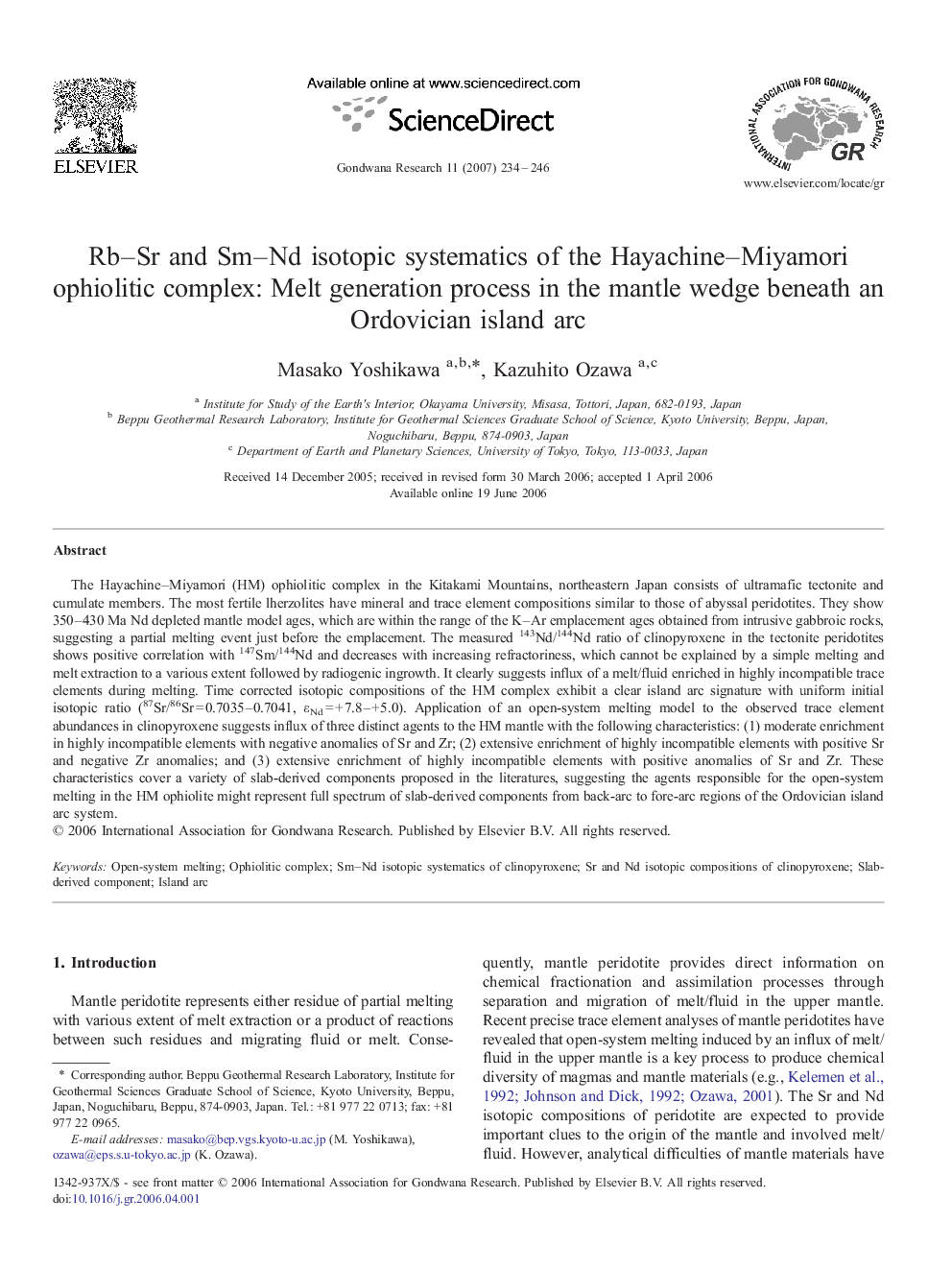| کد مقاله | کد نشریه | سال انتشار | مقاله انگلیسی | نسخه تمام متن |
|---|---|---|---|---|
| 4727832 | 1640154 | 2007 | 13 صفحه PDF | دانلود رایگان |

The Hayachine–Miyamori (HM) ophiolitic complex in the Kitakami Mountains, northeastern Japan consists of ultramafic tectonite and cumulate members. The most fertile lherzolites have mineral and trace element compositions similar to those of abyssal peridotites. They show 350–430 Ma Nd depleted mantle model ages, which are within the range of the K–Ar emplacement ages obtained from intrusive gabbroic rocks, suggesting a partial melting event just before the emplacement. The measured 143Nd/144Nd ratio of clinopyroxene in the tectonite peridotites shows positive correlation with 147Sm/144Nd and decreases with increasing refractoriness, which cannot be explained by a simple melting and melt extraction to a various extent followed by radiogenic ingrowth. It clearly suggests influx of a melt/fluid enriched in highly incompatible trace elements during melting. Time corrected isotopic compositions of the HM complex exhibit a clear island arc signature with uniform initial isotopic ratio (87Sr/86Sr = 0.7035–0.7041, εNd = + 7.8–+ 5.0). Application of an open-system melting model to the observed trace element abundances in clinopyroxene suggests influx of three distinct agents to the HM mantle with the following characteristics: (1) moderate enrichment in highly incompatible elements with negative anomalies of Sr and Zr; (2) extensive enrichment of highly incompatible elements with positive Sr and negative Zr anomalies; and (3) extensive enrichment of highly incompatible elements with positive anomalies of Sr and Zr. These characteristics cover a variety of slab-derived components proposed in the literatures, suggesting the agents responsible for the open-system melting in the HM ophiolite might represent full spectrum of slab-derived components from back-arc to fore-arc regions of the Ordovician island arc system.
Journal: Gondwana Research - Volume 11, Issues 1–2, January 2007, Pages 234–246